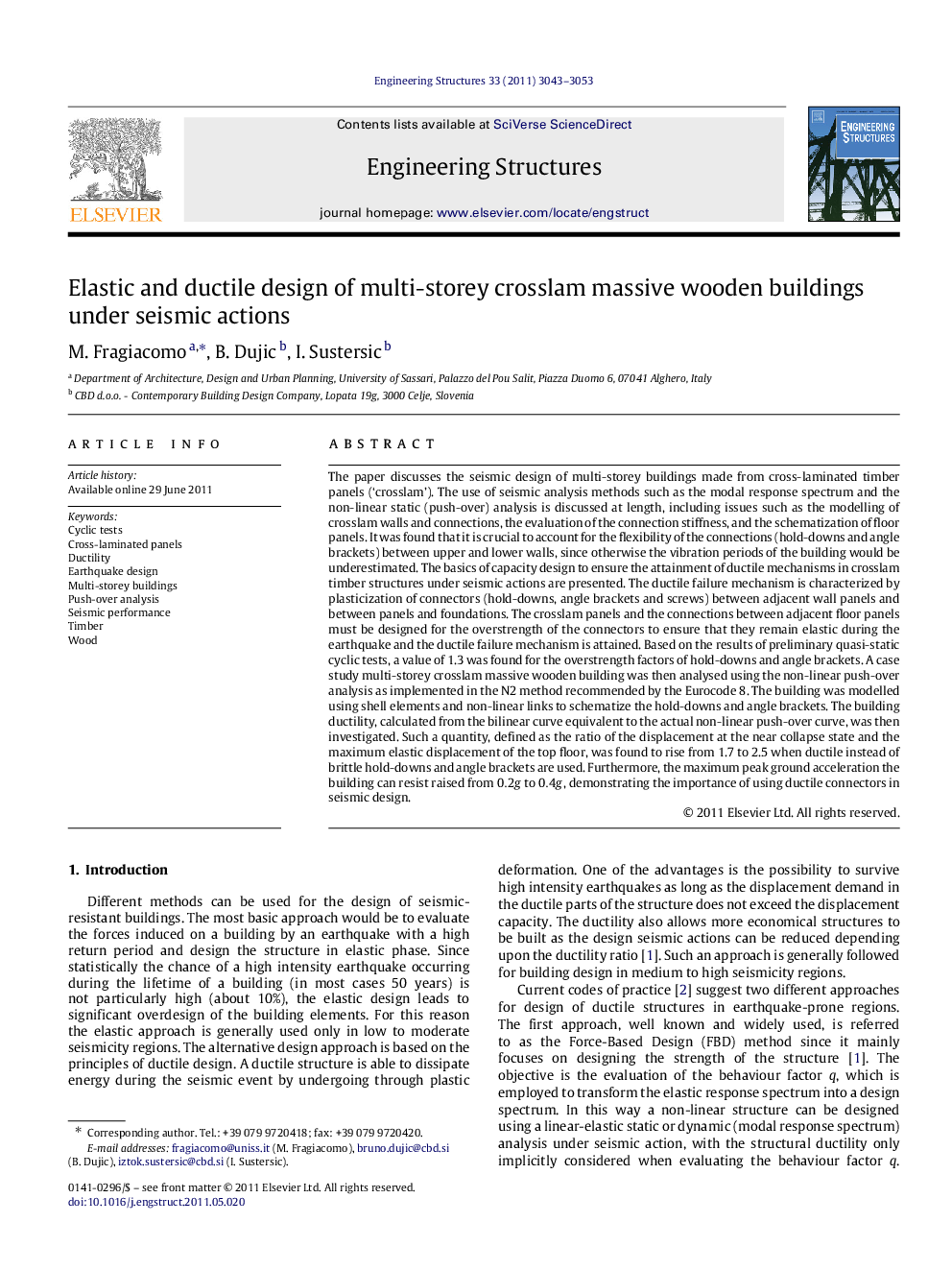| کد مقاله | کد نشریه | سال انتشار | مقاله انگلیسی | نسخه تمام متن |
|---|---|---|---|---|
| 267762 | 504412 | 2011 | 11 صفحه PDF | دانلود رایگان |

The paper discusses the seismic design of multi-storey buildings made from cross-laminated timber panels (‘crosslam’). The use of seismic analysis methods such as the modal response spectrum and the non-linear static (push-over) analysis is discussed at length, including issues such as the modelling of crosslam walls and connections, the evaluation of the connection stiffness, and the schematization of floor panels. It was found that it is crucial to account for the flexibility of the connections (hold-downs and angle brackets) between upper and lower walls, since otherwise the vibration periods of the building would be underestimated. The basics of capacity design to ensure the attainment of ductile mechanisms in crosslam timber structures under seismic actions are presented. The ductile failure mechanism is characterized by plasticization of connectors (hold-downs, angle brackets and screws) between adjacent wall panels and between panels and foundations. The crosslam panels and the connections between adjacent floor panels must be designed for the overstrength of the connectors to ensure that they remain elastic during the earthquake and the ductile failure mechanism is attained. Based on the results of preliminary quasi-static cyclic tests, a value of 1.3 was found for the overstrength factors of hold-downs and angle brackets. A case study multi-storey crosslam massive wooden building was then analysed using the non-linear push-over analysis as implemented in the N2 method recommended by the Eurocode 8. The building was modelled using shell elements and non-linear links to schematize the hold-downs and angle brackets. The building ductility, calculated from the bilinear curve equivalent to the actual non-linear push-over curve, was then investigated. Such a quantity, defined as the ratio of the displacement at the near collapse state and the maximum elastic displacement of the top floor, was found to rise from 1.7 to 2.5 when ductile instead of brittle hold-downs and angle brackets are used. Furthermore, the maximum peak ground acceleration the building can resist raised from 0.2g0.2g to 0.4g0.4g, demonstrating the importance of using ductile connectors in seismic design.
► It is crucial to model the flexibility of the connectors among wall crosslam wooden panels.
► The failure mechanism under seismic load is characterized by plasticization of wall metal brackets.
► Wall panels and connections among floor panels are designed for the overstrength of metal brackets.
► Overstrength factors for metal bracket connectors are estimated as 1.3.
► Non-linear push-over analyses showed the importance of using ductile connectors.
Journal: Engineering Structures - Volume 33, Issue 11, November 2011, Pages 3043–3053